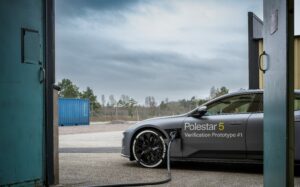False claims on Norwegian EV policy: Why Norway does NOT have second thoughts on electrifying cars

It is a misconception that we must choose between promoting electric vehicles and public transport.
An article in the American magazine Vox claims that Norway is rethinking its reliance on electric cars’. This is not true and it is necessary to provide a more nuanced picture.
Fully electric vehicles (EVs) are of course not sufficient to solve all environmental problems and hardly anyone claims that either. Zero-emission cars will for example not solve problems of congestion or make cities less hostile towards pedestrians and cyclists.
It is just as evident as stating that public transport is crucial but far from being enough of a strategy to address climate change.
High taxes on polluting cars promote EVs
The Norwegian EV policies aim to make EVs competitive with ICE vehicles, not with public transport. This is also the reason that Norway has decided to tax new ICE-cars heavily.
The article emphasizes Porsche’s sale of electric cars in Norway. However, it is important to note that while we appreciate electric sports cars over the polluting kind, Porsche’s EVs make up a very small portion of the EV stock in Norway.
The most popular EVs are far more affordable, with the Nissan Leaf being the most common, accounting for more than 10 percent of all the EVs in the country.
The national government also promotes zero-growth target in cities
The Vox article claims that ‘The country’s current 12-year National Transport Plan includes initiatives to catalyse the adoption of zero-emissions vehicles, but none to reduce car trips’. This is not true.
The national government promotes the ‘zero-growth target’ for transport. The goal says that the increase in passenger transport due to population growth in city areas must be accommodated by a corresponding increase in public transport, cycling, and walking. Since the population is growing in Norwegian urban areas, the target requires a reduction in the number of kilometres driven by car per inhabitant.
Cities choose EV rebates to cut emissions
The article implies that national EV policies pose a significant challenge for cities, because EVs creates less revenue than ICE cars.
But a rebate for EVs can be implemented by increasing the rates for fossil fuel cars, resulting in both reduced emissions, increased income, and traffic reduction.
Do EVs increase cars per capita?
Lastly, the article claims that EVs have caused an increase in cars per capita. However, irrespective of the electric share in the car stock, the number of cars per capita tends to increase with income. There has been no significant change in this trend in Norway after the introduction of EVs.
In fact, the city of Oslo successfully broke the correlation between income and car ownership 15 years ago. The rapid increase of EVs in the city in recent years has not resulted in more cars per capita, serving as a real-world example that it is indeed possible to combine several policy tools and achieve different targets simultaneously.
Norway has paved the way
In summary, the Norwegian electric vehicle policies have been a tremendous success, reducing emissions from new passenger cars by over 90 percent.
This success has paved the way for other countries and various types of zero-emission transport beyond passenger cars.
Norway has demonstrated that the battery electric vehicle is a mature technology with the potential to eliminate all direct CO2 emissions from transport, shifting away from an inefficient and environmentally damaging use of energy through burning fossil fuels. However, the technology remains costly and requires incentives to encourage people to choose it over the combustion engine.
Broad political support for the 2025-goal
The EV policies must, of course, evolve as sales shares increase and the EVs become cheaper. But abandoning these policies now would only make polluting cars more attractive.
There is a broad political agreement in Norway supporting the ambitious target of selling no new cars with emissions in the country by 2025. None of the political parties are reconsidering this commitment.
On the contrary, EV policies have expanded into other areas of transportation. Norway is not only electrifying passenger cars, but also buses, ferries, heavy-duty vehicles, and heavy construction machines.
Therefore, Norway’s approach should be copied and adapted, not misunderstood.




